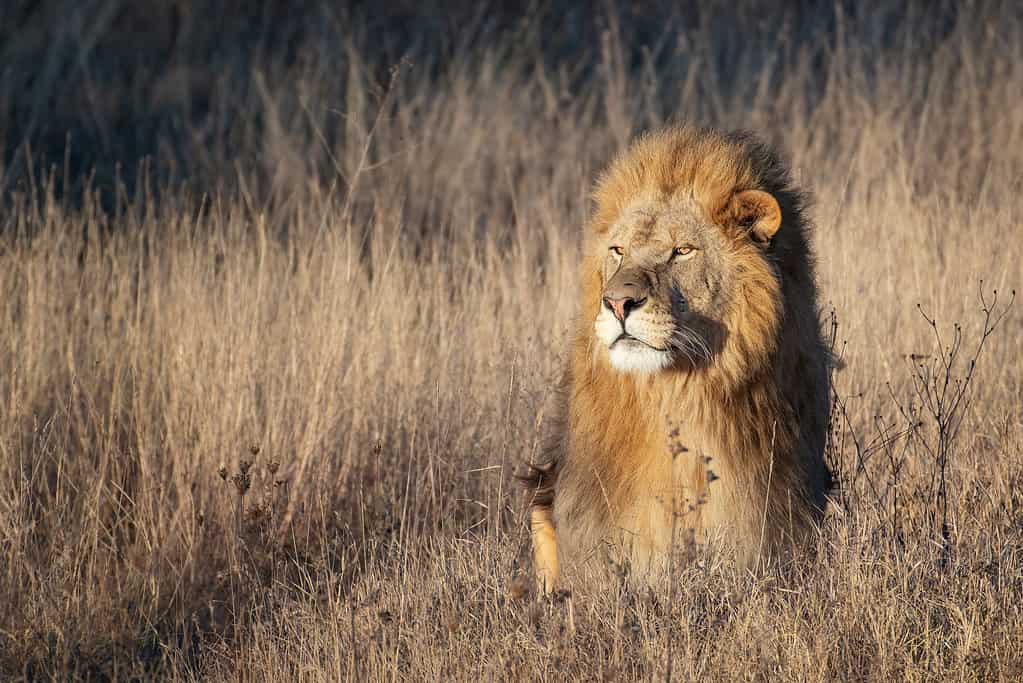At the start of this clip, it looks as if we are going to see a fairly routine lion hunt. Perfectly camouflaged by the long grass, a young male lion is sneaking up on a male Impala. The herbivore is grazing and appears to have no idea that he is in the predator’s sights. Suddenly, the impala lifts his head and becomes aware of the lion’s presence. At this point, his behavior changes significantly.
The impala repeatedly brandishes his large horns in the direction of the lion. He even lowers his head to the ground to pick up some vegetation and flick it around. This is to draw attention to just how formidable his horns are! It’s a typical display of defiance and the impala is warning the lion to back off. The strategy is working. Despite being within striking distance of the prey, the lion is hesitating and weighing up his options! Is this meal worth the risk?
What Do Lions Normally Eat?
Lions have to eat meat to stay healthy – they are carnivores. They tend to feed every three or four days and rely heavily on the element of surprise when they are hunting. When it comes to prey species, they are not too fussy. On the menu for a lion, you will find anything from ostriches through to zebra.
Studies conducted in the Kruger National Park have found that male lions in the area prefer to hunt buffalo whereas lionesses prefer to hunt zebra and wildebeest. Interestingly, the study also found that lions are not that keen on hunting impala. This footage illustrates why that may be the case!

Lions are not often that keen on hunting impala!
©MriyaWildlife/iStock via Getty Images
Do All Impalas Have Horns?
The impala (Aepyceros Melampus) is a member of the Bovidae family along with antelopes, gazelles, and goats. They are found in southern Africa in woodlands and grasslands with low to medium-height grasses.
Only the males have horns, and they use them to fight for dominance during the rutting season. Impala horns have a bony structure and are fused to the skull. They can grow as long as 36 inches! The horns have a protective keratin layer on the outside but they can get damaged or even break off. When this happens, they do not grow back.
Impala males often use their horns to show off in front of predators. They are signaling that it is a waste of time trying to catch them because they are armed!
Watch the Incredible Clip Below
Thank you for reading! Have some feedback for us? Contact the AZ Animals editorial team.








